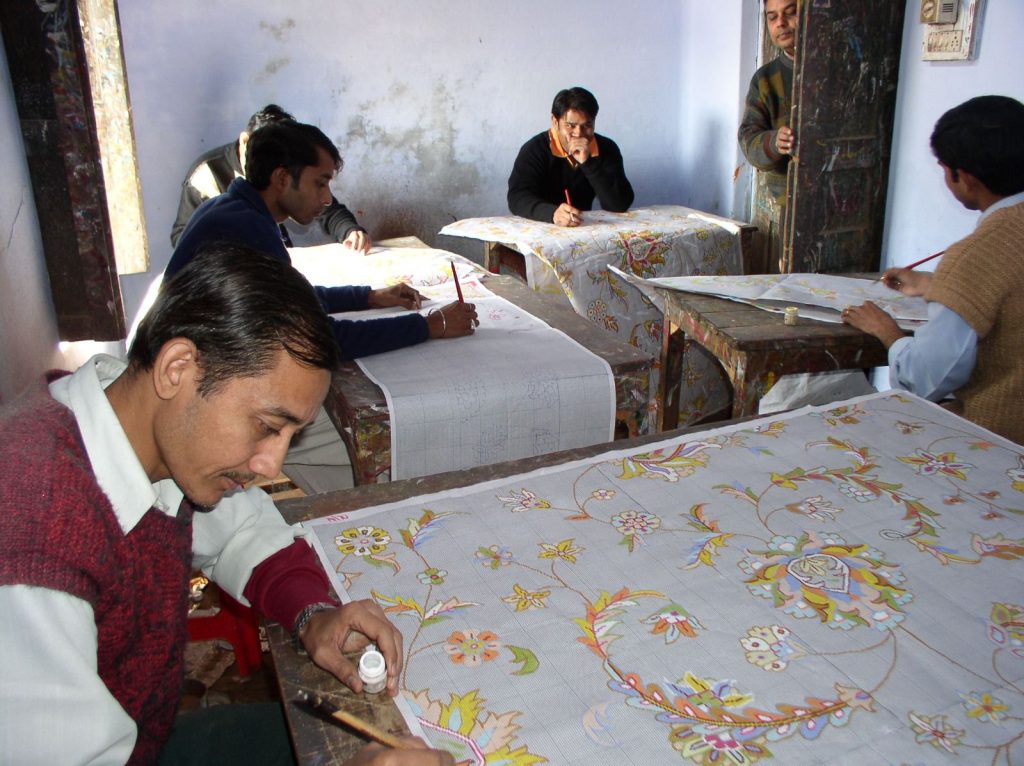
How Handmade Rugs Are Crafted: (A Step-by-Step Guide)
Handmade rugs are more than just floor coverings; they are intricate works of art, steeped in history and tradition. Crafted by skilled artisans, each rug is a unique masterpiece that reflects the culture, creativity, and dedication of its maker. Unlike machine-made rugs, which are produced quickly and in bulk, handmade rugs are the result of a meticulous, time-honored process that can take months or even years to complete. From the initial design to the final knot, every step in crafting a handmade rug is a labor of love, requiring patience, precision, and an eye for detail. In this guide, we’ll take you through the fascinating journey of how these beautiful creations are brought to life, step by step.
The History and Significance of Handmade Rugs
Rug-making is an ancient craft, with roots tracing back thousands of years to regions like Persia (modern-day Iran), Turkey, India, and Central Asia. Originally created for practical purposes—providing warmth and comfort in homes—these rugs evolved over time into symbols of status, wealth, and artistic expression. Many handmade rugs feature designs inspired by nature, mythology, or cultural motifs, and some even tell stories or carry symbolic meanings. Today, handmade rugs are cherished not only for their beauty but also for their durability and the craftsmanship that goes into every piece.
Step 1: Designing the Rug
The journey of a handmade rug begins with its design. Artisans often draw inspiration from their surroundings, cultural heritage, or historical patterns. Some designs are passed down through generations, while others are entirely new creations. The design process typically starts with a sketch, often drawn on graph paper, where each square represents a knot in the rug. This detailed plan, known as a “cartoon,” serves as a blueprint for the weaver to follow.
**Cultural Influence**: Designs vary widely depending on the region. For example, Persian rugs often feature intricate floral patterns, while Turkish rugs may incorporate geometric shapes or tribal symbols.
**Symbolism**: Many rugs include motifs with deeper meanings, such as the tree of life, symbolizing growth and immortality, or the evil eye, believed to ward off misfortune
Once the design is finalized, the artisan moves on to selecting the materials that will bring the rug to life.
.

Step 2: Selecting the Materials
The choice of materials is crucial in determining the rug’s texture, durability, and overall quality. The most common fibers used in handmade rugs are wool, silk, and cotton, each offering distinct advantages.
**Wool**: The most popular choice, wool is prized for its durability, softness, and natural resistance to dirt and wear. It’s also easy to dye, making it ideal for vibrant, long-lasting colors.
**Silk**: Silk rugs are known for their luxurious sheen and fine detail. However, they are more delicate and often more expensive due to the labor-intensive process of harvesting silk.
**Cotton**: Typically used for the rug’s foundation (the warp and weft threads), cotton is strong and provides stability to the structure.
Artisans carefully select high-quality fibers, as the material’s grade directly impacts the rug’s longevity and appearance. For instance, wool from specific sheep breeds, like those in the highlands of Iran, is renowned for its superior quality.

Step 3: Dyeing the Fibers
Before weaving can begin, the fibers must be dyed to achieve the desired colors. Dyeing is an art in itself, and the methods used can greatly influence the rug’s final look.
**Natural Dyes**: Traditionally, artisans used natural dyes derived from plants, insects, and minerals. For example, indigo plants produce blue, while cochineal insects yield red. Natural dyes are valued for their rich, subtle hues and eco-friendliness.
**Synthetic Dyes**: In modern times, synthetic dyes have become more common due to their consistency and wide range of colors. However, many artisans still prefer natural dyes for their authenticity and the unique character they impart.

The dyeing process involves soaking the fibers in dye baths and then drying them, often in the sun. This step requires precision to ensure the colors match the design’s specifications and remain vibrant over time.
Step 4: Weaving the Rug
Weaving is the heart of rug-making and the most time-consuming step. There are two primary techniques used in handmade rugs: hand-knotting and flat-weaving.

**Hand-Knotting**: This technique involves tying individual knots onto the warp threads (the vertical foundation threads) to create the pile of the rug. Each knot is meticulously tied by hand, and the density of knots can range from 100 to over 1,000 per square inch, depending on the rug’s quality. The weaver follows the cartoon, knot by knot, row by row, to bring the design to life. This process can take months or even years for larger or more intricate rugs.
**Flat-Weaving**: In flat-weave rugs, such as kilims, there is no pile. Instead, the weft threads (horizontal threads) are woven through the warp threads to create a flat surface. This technique is faster than hand-knotting but still requires great skill to achieve intricate patterns.
Throughout the weaving process, the artisan must maintain consistency in tension and knot density to ensure the rug’s structural integrity and visual appeal.
Step 5: Finishing the Rug
Once the weaving is complete, the rug undergoes a series of finishing touches to enhance its appearance and durability.
**Washing**: The rug is washed to remove any excess dye, dirt, or debris accumulated during the weaving process. This step also helps to soften the fibers and bring out the richness of the colors.
**Trimming**: The pile is trimmed to the desired length, creating a uniform surface. In some cases, artisans may carve the pile to add texture or highlight certain design elements.
In flat-weave rugs, such as kilims, there is no pile. Instead, the weft threads (horizontal threads) are woven through the warp threads to create a flat surface. This technique is faster than hand-knotting but still requires great skill to achieve intricate patterns.
**Binding and Fringing**: The edges of the rug are bound to prevent unraveling, and decorative elements like fringes or tassels may be added for aesthetic appeal.


Once the weaving is complete, the rug undergoes a series of finishing touches to enhance its appearance and durability.
The Artistry Behind Handmade Rugs
Crafting a handmade rug is a labor-intensive process that demands not only technical skill but also artistic vision and patience. Each rug is a testament to the artisan’s dedication, with every knot and weave reflecting hours of meticulous work. The result is a one-of-a-kind piece that can transform a space, adding warmth, beauty, and a touch of history to any room.
Whether you’re a collector, a homeowner, or simply an admirer of fine craftsmanship, understanding the process behind handmade rugs deepens your appreciation for these timeless treasures. Next time you step onto a handmade rug, take a moment to consider the journey it has taken—from the artisan’s hands to your home—and the rich tradition it represents.


